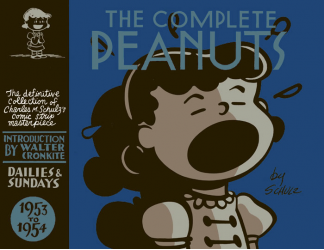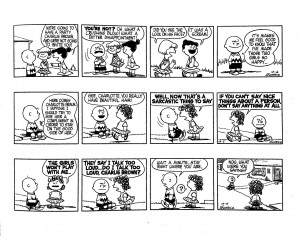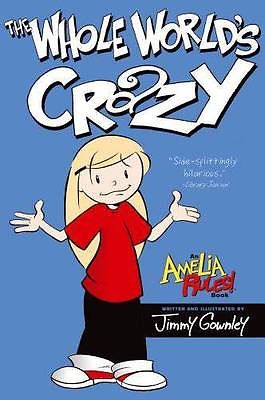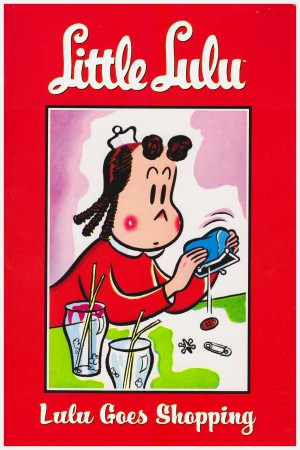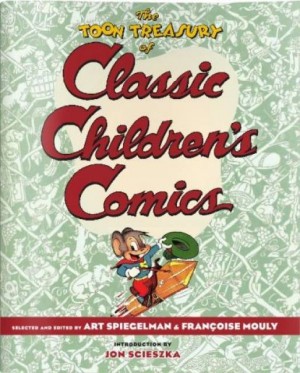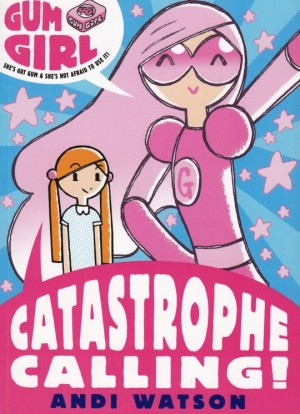Review by Woodrow Phoenix
The Complete Peanuts is a series of 25 volumes, reprinting year by year every one of the almost 18,000 newspaper comic strips that Charles Schulz wrote and drew in a record-breaking unbroken run between 1952 and 2002. The Complete Peanuts 1953-1954 is the second volume, featuring many strips that have never been reprinted before.
The third year of Peanuts is mostly driven by Charlie Brown, still a wisecracking and brash protagonist, but beginning to succumb to inner doubts more often. Shermy, Patty and Violet have their own interests, but Schroeder is the most preoccupied, rarely seen without his piano. They form a rotating group of friends and sometimes foes, depending on the situation. The most changed character in this volume is Lucy, who grows more confident and troublemaking as the “Fussbudget” begins to emerge. By January 24th, 1954 (page 167), she is kicking everyone’s special toys and games out of their hands in one panel after another, shouting “That’s what I think of your ‘ol stamp collection!!” and then “That’s what I think of your ol’ stupid marbles!!” Running away from the enraged group chasing her, she says “I’m frustrated and inhibited. And nobody understands me.”
In a sequence that also introduces adults into the strip for the first time, Charlie Brown enters Lucy into a golf tournament, and she shows the talent to go all the way to the final. The realistically drawn trouser legs and shoes of the adults surrounding the children are funny, but there’s an unintended side effect. In emphasising the gulf between the grown-up and child-like worlds, they also undercut the ‘reality’ of Schultz’s Li’l Folks. There’s a boundary to how far our belief in their cartoon world can stretch, and it depends on adults being kept outside. After this, adults are only heard off-panel and not shown.
Linus is still a toddler, but he’s beginning to talk and defy his sister Lucy, and the famous security blanket appears for the first time. Other debuts in this volume include Pig-Pen, whose defining characteristic is dirt (he is always covered in it), and Charlotte Braun, the opposite of Charlie Brown in one very obvious way: she talks EXTREMELY LOUD ALL THE TIME. She only has one gimmick, but Snoopy becomes more interesting as the book goes on. Many of the great strips shown here are silent slapstick or commentary moments, but as his personality begins to expand and he begins to think and talk, he gets funnier day by day.
This beautifully designed, carefully curated volume opens with an introduction by newsreader Walter Cronkite and closes with a short biography of Schultz. There is one editorial note; a Sunday page in this volume is incomplete. No perfect file copy could be found, and instead series designer Seth has drawn the missing top tier. Fantagraphics pledged to add the strip to any future edition of this volume if they managed to track it down. Thanks to a reader who did find it, the fugitive Sunday page now appears in Volume Four of The Complete Peanuts.
When reprinted in paperback, a complete redesign occurred, enough to warrant a separate review here.
